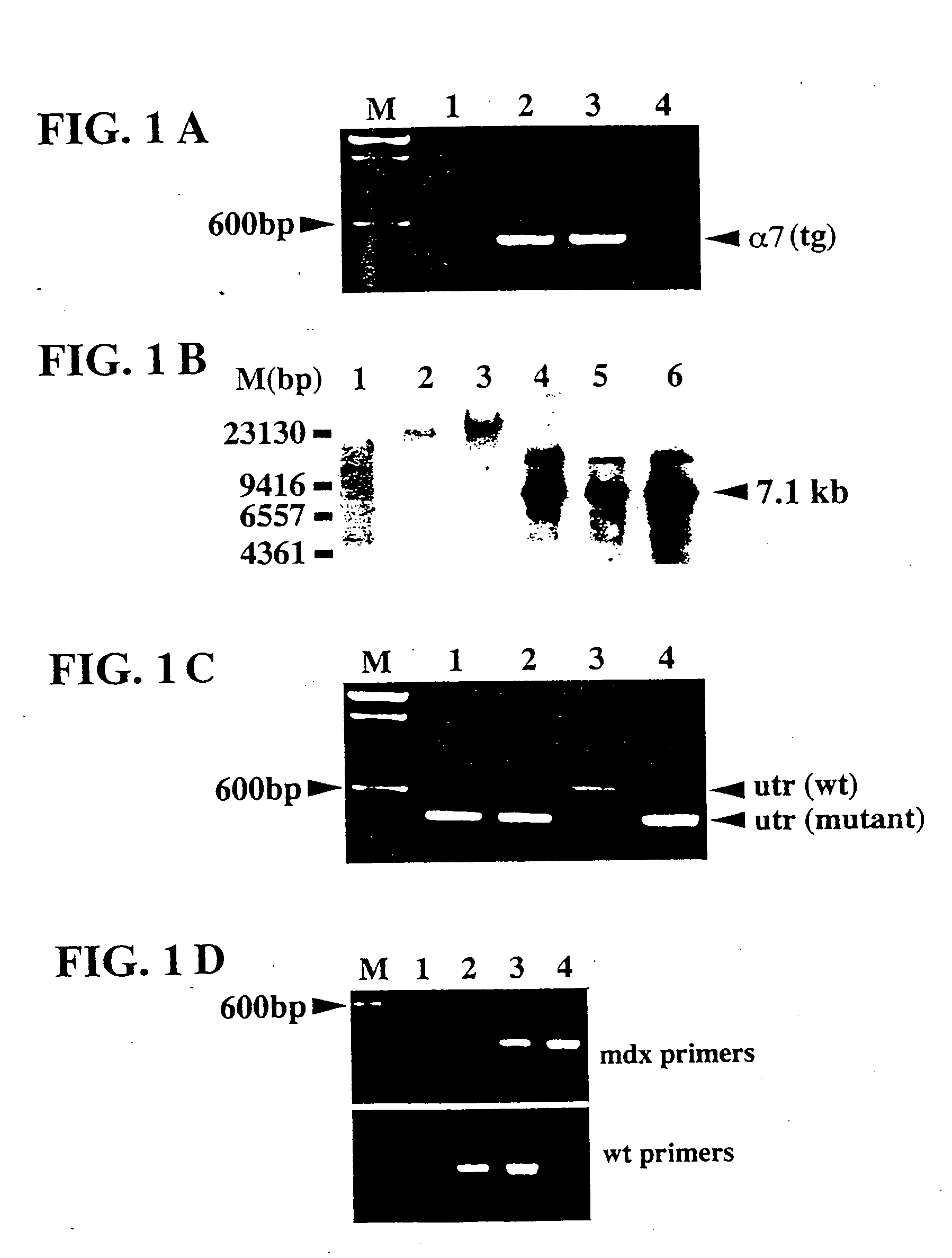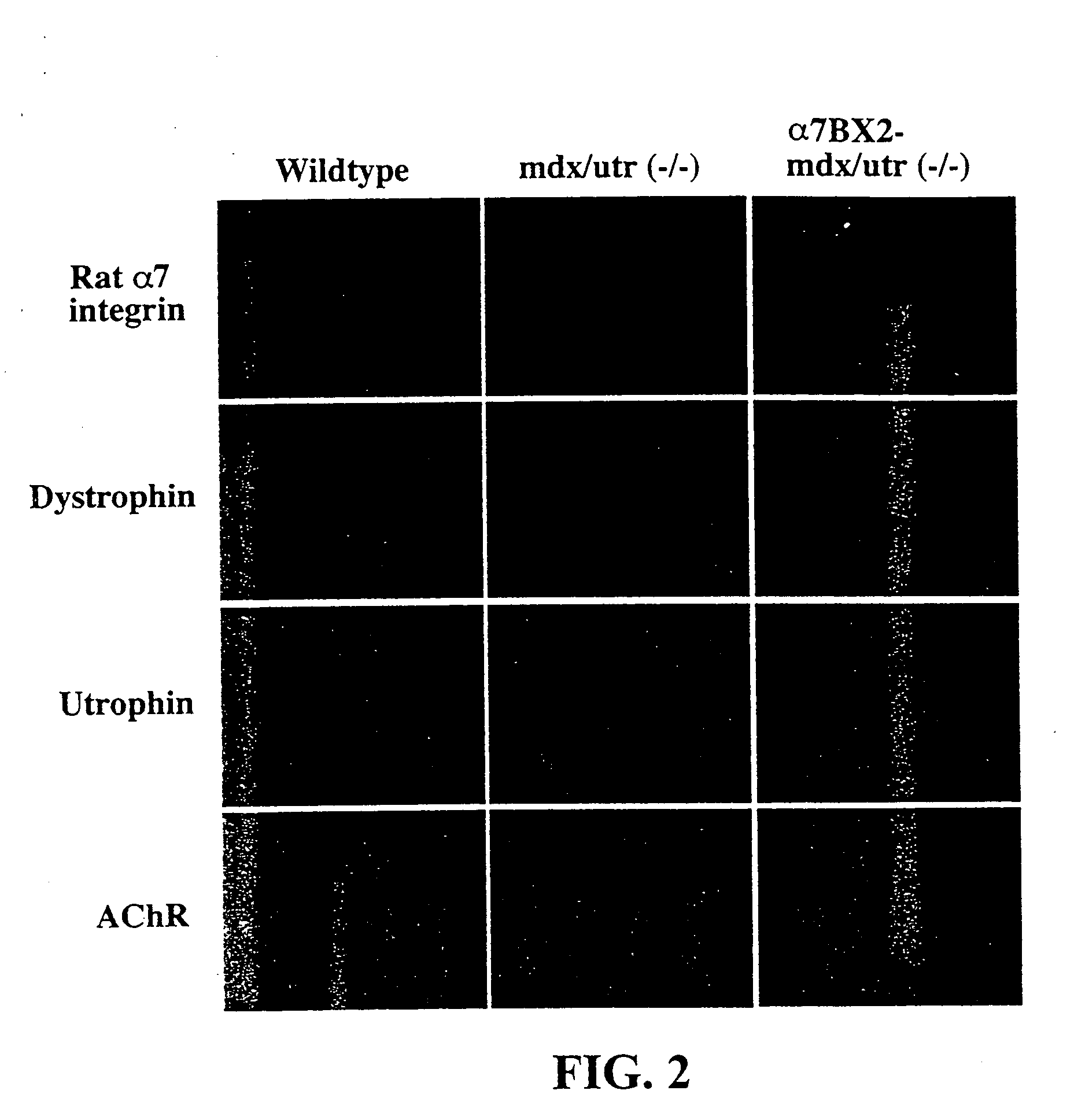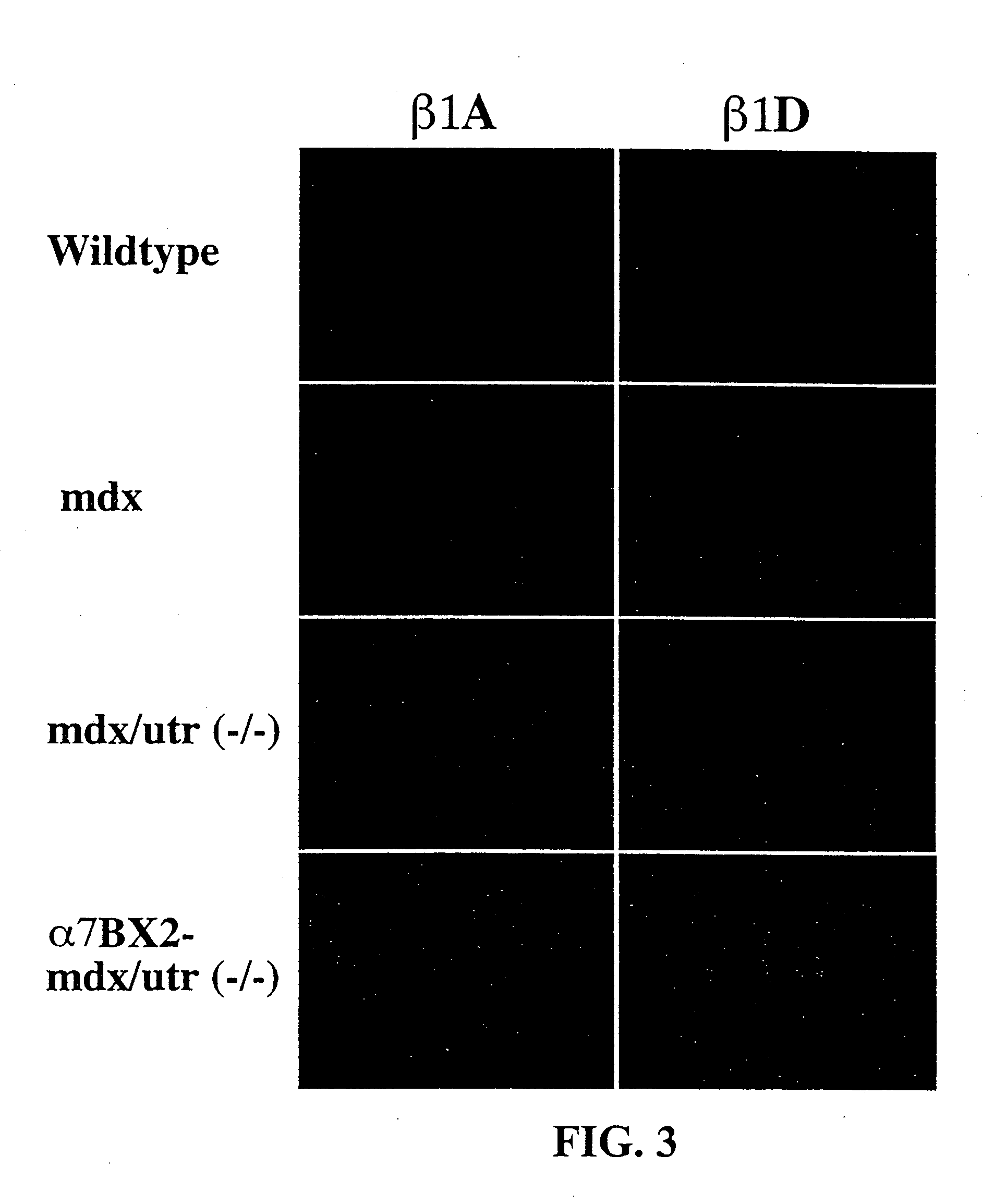Assay methods and amelioration of muscular dystrophy symptoms
a technology of muscular dystrophy and assay methods, applied in the field of molecular technology, can solve the problems of muscular dystrophy, progressing muscle deterioration, severely restricting mobility, etc., and achieve the effects of improving physical condition and mobility of muscular dystrophy patients, improving physical condition and mobility, and improving quality of li
- Summary
- Abstract
- Description
- Claims
- Application Information
AI Technical Summary
Benefits of technology
Problems solved by technology
Method used
Image
Examples
example 1
MCK-α7BX2 Integrin Construct
[0071] The CDNA encoding the rat α7BX2 integrin isoform was cloned into the pBK-RSV vector (Stratagene, La Jolla, Calif.) downstream of the 3.3 kb mouse muscle creatine kinase promoter (MCK, described in Jaynes et al., 1986) and the mouse α7 integrin cell surface localization signal sequence using the restriction sites Aatil and Kpnl. The MCK promoter was kindly provided by Dr. Stephen Hauschka, (University of Washington). The construct was verified by DNA sequencing. Previous studies have shown that the MCK promoter is only active in heart and skeletal muscle (Jaynes et al., 1986; Johnson et al., 1989; Shield et al., 1996). The expression and functionality of the MCK-α7BX2 integrin construct was verified by transfecting C2C12 myoblasts (Burkin et al., 1998; Burkin et al., 2000). The sequence of the integrin α7 subunit is given in Song et al. (1992). See also Burkin and Kaufman (1998) for a discussion of the MCK-regulated construct.
example 2
Production of Transgenic mdx / utr(− / −) mice
[0072] The MCK-α7BX2 construct-containing DNA fragment was gel purified. Fl female mice from a C57BL6 X SJ6 strain cross were superovulated, mated to Fl male mice and fertilized oocytes were collected. The MCK-α7BX2 construct was microinjected into male pronuclei and injected oocytes were placed into pseudopregnant mice at the University of Illinois Transgenic Animal Facility. Resulting pups were weaned at 3 weeks of age. Genomic DNA was isolated from 0.5 cm tail clips using a DNA isolation kit (Promega, Madison, Wis.). Primers (MCK1: 5′-caagctgcacgcctgggtcc-3′, SEQ ID NO:1; and AATII: 5′-ggcacccatgacgtccagattgaag-3′, SEQ ID NO:2) used to amplify between the MCK promoter and the α7 integrin cDNA resulted in a 455 bp amplimer only in transgenic mice. Transgenic male Fl mice were bred with mdx / utr (±) female mice, provided by Dr. Joshua Sanes (Washington University, St. Louis, Mo.).
[0073] All male offspring were mdx due to the location of th...
example 3
Tissue Collection and Storage
[0074] Muscle biopsies, for example from the vastus lateralis muscle, are obtained from dystrophic patients (or others of interest) and from normal humans using local anaesthetic. Irrelevant biopsy samples from the same patients and normal humans serve as controls. Biopsied muscle samples are frozen in liquid nitrogen immediately after removal. Further control muscle samples are obtained from normal individuals without any known muscle diseases. Muscle samples are stored at −80° C. prior to analysis.
PUM
| Property | Measurement | Unit |
|---|---|---|
| weight | aaaaa | aaaaa |
| pH | aaaaa | aaaaa |
| pH | aaaaa | aaaaa |
Abstract
Description
Claims
Application Information
 Login to View More
Login to View More - R&D
- Intellectual Property
- Life Sciences
- Materials
- Tech Scout
- Unparalleled Data Quality
- Higher Quality Content
- 60% Fewer Hallucinations
Browse by: Latest US Patents, China's latest patents, Technical Efficacy Thesaurus, Application Domain, Technology Topic, Popular Technical Reports.
© 2025 PatSnap. All rights reserved.Legal|Privacy policy|Modern Slavery Act Transparency Statement|Sitemap|About US| Contact US: help@patsnap.com



